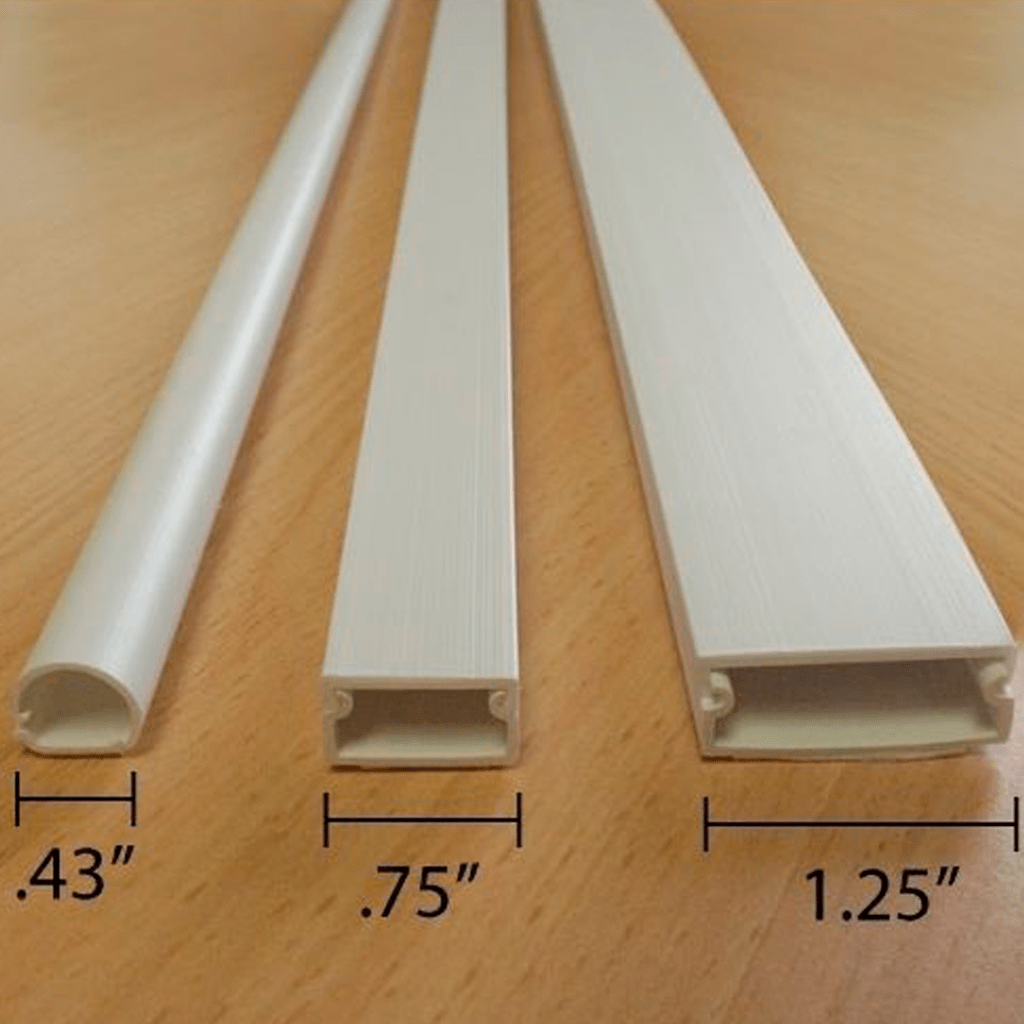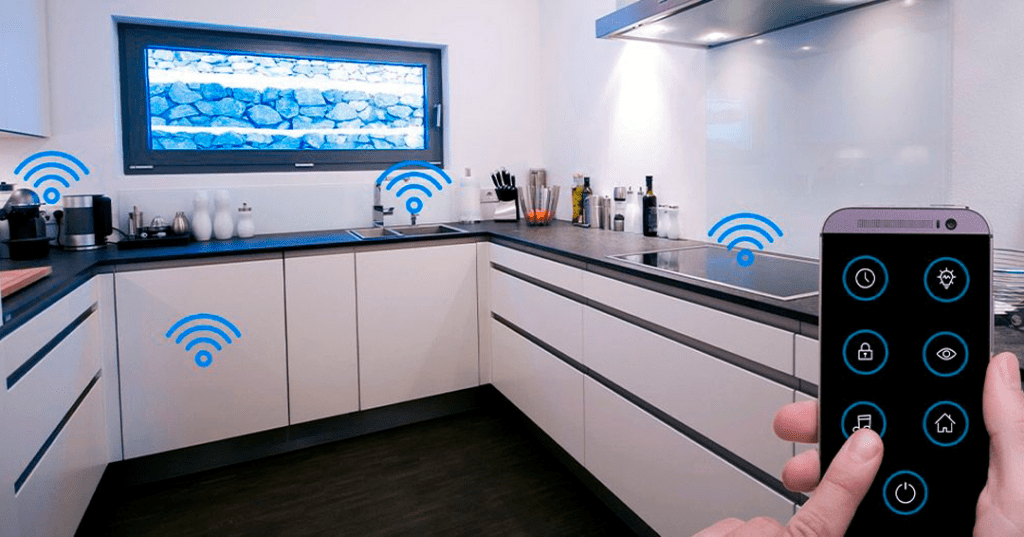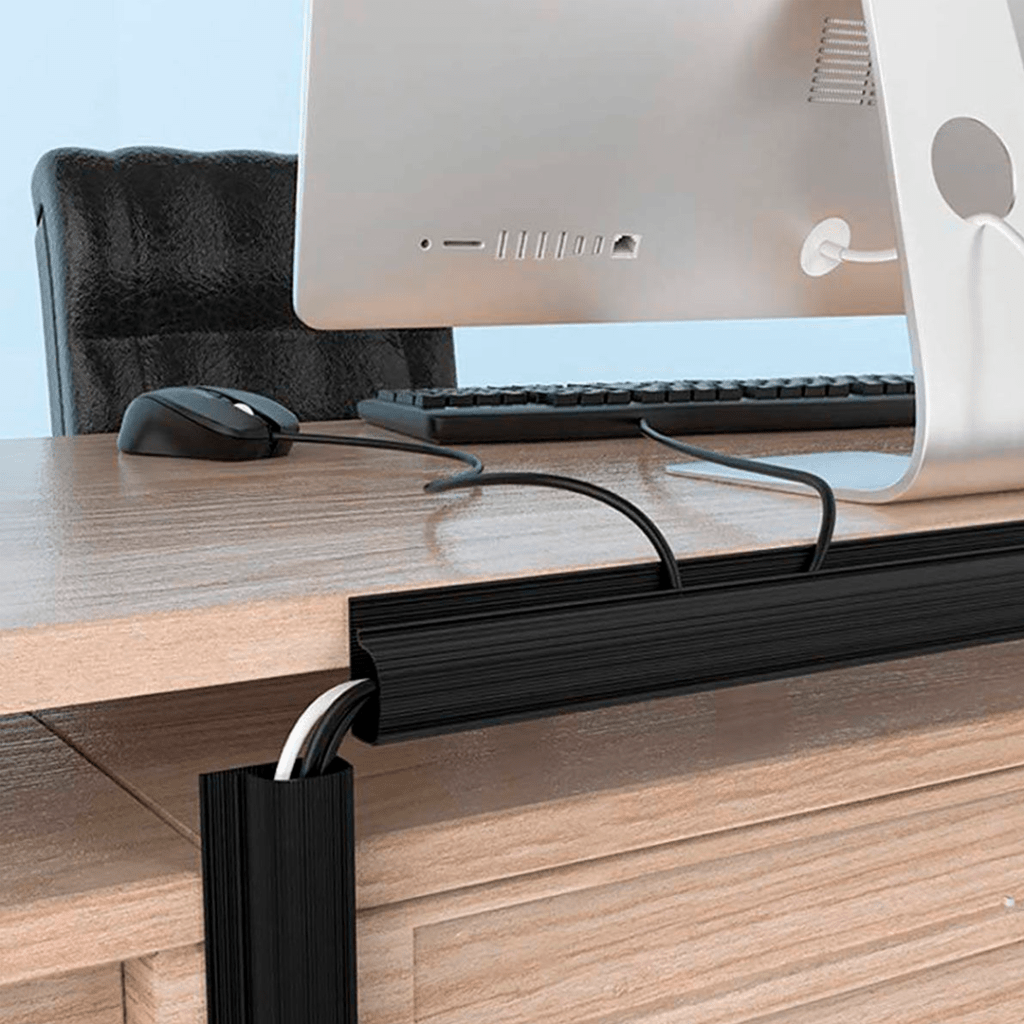Table of Contents:
- Introduction
- Planning and Preparation
- Concealing Wires Behind Walls
- Hiding Wires in Cord Covers and Raceways
- Incorporating Wires into Furniture and Décor
- Going Wireless
- Safety Considerations
- Conclusion
Introduction
In today’s modern homes, we have a multitude of devices and appliances that require electrical connections. However, the presence of unsightly wires can be a visual eyesore and disrupt the overall aesthetics of your living space. Fortunately, there are several techniques you can employ to hide these wires and create a clean, organized look.
This blog post will guide you through various methods of wire concealment for your home improvement projects. From concealing wires behind walls to utilizing cord covers and raceways, we’ll explore different strategies to help you achieve a clutter-free and visually appealing environment. We’ll also touch upon incorporating wires into furniture and décor, exploring wireless alternatives, and emphasizing safety considerations throughout the process.
Before we dive into the specifics, let’s understand why it’s important to hide wires and explore the benefits of doing so. By the end of this blog, you’ll have a comprehensive understanding of how to hide wires effectively and enhance the overall look and feel of your living space. So, let’s get started!
Planning and Preparation
Before you embark on hiding the wires of your installations, it’s essential to plan and prepare adequately. This step will ensure a smooth and successful wire concealment process. Here are some key considerations to keep in mind:
Assessing the Area: Begin by assessing the area where you want to hide the wires. Take note of the existing layout, furniture, and any obstacles that may affect wire routing. This assessment will help you determine the best approach for concealing the wires.
Determining Wire Routes: Identify the optimal routes for your wires to ensure they remain hidden and accessible. Consider the proximity to electrical outlets and the shortest, most convenient paths. Avoid running wires near heat sources or areas with high foot traffic to minimize potential hazards.
Gathering Tools and Materials: Make a list of the tools and materials you’ll need for the wire concealment project. This may include wire channels, conduit, cord covers, raceways, cable ties, a stud finder, measuring tape, a level, a utility knife, and a power drill. Ensure you have everything on hand before starting the project.
By taking the time to plan and prepare, you’ll have a clear understanding of the layout and requirements, enabling you to proceed with the wire concealment process smoothly and efficiently. In the next sections, we’ll explore various techniques to hide wires behind walls, utilize cord covers and raceways, incorporate wires into furniture and décor, and even explore wireless alternatives.
Concealing Wires Behind Walls
One of the most effective ways to hide wires is by concealing them behind walls. This method provides a clean and seamless look, as the wires are completely hidden from view. Here are three common techniques for hiding wires behind walls:
Creating Wire Channels:
- Determine the desired path for the wires and mark it on the wall.
- Use a stud finder to locate any studs or obstacles behind the wall.
- Cut a narrow channel in the wall using a utility knife or a drywall saw, following the marked path.
- Insert the wires into the channel and use cable ties or adhesive clips to secure them in place.
- Patch and repair the wall using drywall compound or putty, and sand it smooth.
- Finally, paint the wall to match the surrounding area for a seamless finish.
Installing Conduit:
- Measure the length of the wire route and select the appropriate size and type of conduit.
- Use a power drill and hole saw to create entry and exit points for the conduit.
- Attach conduit mounting brackets to the wall at regular intervals.
- Insert the wires into the conduit and feed them through the mounted brackets.
- Secure the conduit to the brackets using screws or adhesive.
- Patch and paint the entry and exit points to blend them with the wall.
Using Crown Molding or Baseboard:
- Select crown molding or baseboard that matches your existing décor.
- Measure and cut the molding or baseboard to the desired length.
- Attach the molding or baseboard to the wall, leaving a small gap between the wall and the bottom edge.
- Feed the wires through the gap between the wall and the molding/baseboard.
- Use adhesive clips or cable ties to secure the wires to the backside of the molding/baseboard.
- Finally, caulk or paint the molding/baseboard to give it a finished look.
By employing these techniques, you can effectively hide wires behind walls, creating a neat and organized appearance in your living space. Remember to follow safety precautions when working with electrical installations and consult a professional if needed.
Hiding Wires in Cord Covers and Raceways

Another popular method for wire concealment is using cord covers and raceways. These solutions are especially useful when you want to hide wires along the surface of walls or baseboards. Here’s how you can effectively hide wires using cord covers and raceways:
Selecting Cord Covers:
- Choose cord covers that match the color and style of your walls or baseboards. They come in various materials such as plastic, metal, or fabric.
- Measure the length of the wire route and select cord covers that are long enough to accommodate the wires.
- Consider whether you need a cord cover with adhesive backing or one that can be mounted with screws.
Installing Cord Covers:
- Clean the surface of the wall or baseboard where the cord cover will be installed.
- If using adhesive-backed cord covers, peel off the backing and carefully press the cord cover onto the wall, ensuring it aligns with the wire route.
- If using cord covers with mounting screws, use a level to ensure they are straight, then mark the screw hole locations. Drill pilot holes and secure the cord cover with screws.
- Insert the wires into the cord cover, ensuring they are neatly arranged.
- For longer wire routes, you may need to connect multiple cord covers using connectors or couplers.
Using Raceways for Wire Management:
- Raceways are similar to cord covers but provide a larger channel for multiple wires.
- Measure the length of the wire route and select the appropriate size of raceway.
- Clean the surface where the raceway will be installed.
- Peel off the adhesive backing and carefully press the raceway onto the wall, aligning it with the wire route.
- Insert the wires into the raceway, organizing them neatly.
- For corners or turns, use raceway fittings or corner pieces to ensure a smooth transition.
Cord covers and raceways are excellent options for hiding wires without the need for cutting into walls. They provide a clean and organized look while keeping the wires easily accessible for maintenance or adjustments. Ensure that the cord covers or raceways you choose are durable and meet your aesthetic preferences.
In the next section, we’ll explore how you can incorporate wires into furniture and décor to further enhance wire concealment.
Incorporating Wires into Furniture and Décor
Another creative approach to hiding wires is by incorporating them into furniture and décor elements. This method not only conceals the wires but also allows you to integrate them seamlessly into your home’s design. Here are a few ideas to help you incorporate wires into furniture and décor:
Utilizing Cable Management Solutions:
- Cable management sleeves or boxes: These products are designed to hold and organize multiple wires. Simply place the wires inside the sleeve or box and route them through the designated openings. Then, secure the sleeve or box to the back of your furniture using adhesive or screws.
- Cable clips and ties: These small accessories can be used to fasten wires to the back or underside of furniture, keeping them neatly in place and preventing them from tangling.
Installing Power Strips in Furniture:
- Consider integrating power strips into furniture pieces such as desks, entertainment centers, or bedside tables. You can create hidden compartments or cutouts within the furniture to accommodate the power strip and provide easy access for plugging in devices. Ensure that the furniture has proper ventilation to prevent overheating.
Camouflaging Wires with Decorative Elements:
- Decorative tape or washi tape: Choose decorative tapes that complement your décor and wrap them around the wires to blend them with the surroundings. This method works well for wires running along walls or furniture edges.
- Faux foliage or plants: Strategically place artificial plants or foliage along the wire route to camouflage them. This technique is particularly useful for wires running vertically, such as near a TV or wall-mounted artwork.
- Decorative fabric or curtains: If you have wires running along the back of furniture, you can use fabric or curtains to create a decorative cover. Attach the fabric or curtain to the furniture, allowing it to drape over the wires, hiding them from view.
By incorporating wires into furniture and décor elements, you can seamlessly blend them with your home’s design aesthetic while keeping them organized and concealed. Be sure to choose cable management solutions and decorative elements that suit your style and preferences.
Next, we’ll explore the option of going wireless and how it can help eliminate the need for visible wires altogether.
Going Wireless

If you’re looking to completely eliminate the need for visible wires, going wireless is an excellent option. With advancements in technology, many devices and systems can now operate wirelessly, reducing clutter and providing a seamless look. Here are some areas where you can embrace wireless alternatives:
Wireless Charging Solutions:
- Consider investing in wireless charging pads or docks for your smartphones, tablets, and other compatible devices. These eliminate the need for charging cables and allow you to conveniently charge your devices by simply placing them on the charging surface.
Wireless Audio and Video Transmission:
- Use wireless speakers or soundbars to enjoy high-quality audio without the need for speaker wires. These speakers can connect to your devices via Bluetooth or Wi-Fi, providing a clutter-free audio experience.
- For home entertainment systems, opt for wireless HDMI transmitters and receivers. These devices allow you to transmit audio and video signals wirelessly from your media sources to your TV or projector.
Smart Home Integration:
- Embrace smart home technology that connects wirelessly. Smart devices like smart thermostats, smart lighting systems, and smart security cameras can be controlled and monitored through wireless connections, reducing the need for visible wires.
While going wireless offers significant benefits in terms of wire concealment, it’s essential to consider the limitations and requirements of each wireless solution. Factors such as signal range, compatibility, and battery life should be taken into account when selecting wireless alternatives.
In the next section, we’ll discuss safety considerations to keep in mind throughout the wire concealment process.
Safety Considerations
When hiding wires and performing any electrical work, it’s crucial to prioritize safety. Here are some important safety considerations to keep in mind:
-
Working with Electrical Systems:
- Always turn off the power supply before handling any electrical wiring. Locate the appropriate circuit breaker or fuse and switch it off.
- If you’re unsure about any electrical work, consult a qualified electrician to ensure the proper installation and safety of your wiring.
- Avoid overloading electrical outlets or power strips. Distribute the load evenly and use surge protectors where necessary.
- Do not run wires through walls or ceilings that contain insulation, as this can create a fire hazard. Use approved wire channels, conduit, or raceways instead.
-
Proper Cable Management:
- Ensure that wires are not tightly bent or twisted, as this can damage the insulation and lead to electrical hazards. Allow for proper slack and gentle curves when routing wires.
- Keep wires away from heat sources, flammable materials, or areas with excessive moisture.
- Use cable ties or clips to secure wires in a neat and organized manner. Avoid tightly cinching the ties to prevent damage to the wires.
- Regularly inspect your wire concealment solutions to ensure they are in good condition and not damaged.
-
Ensuring Fire Safety:
- Use fire-resistant materials and products, especially when concealing wires behind walls or in furniture.
- Avoid running wires near heating appliances, hot surfaces, or combustible materials.
- Regularly check smoke detectors and ensure they are in proper working condition.
Remember, if you are unsure about any aspect of the wire concealment process or if you have concerns about electrical safety, it’s always recommended to consult a qualified professional or electrician.
Hiding wires of your installations can significantly enhance the appearance and organization of your living space. Whether you choose to conceal wires behind walls, use cord covers and raceways, incorporate wires into furniture and décor, or explore wireless alternatives, it’s important to prioritize safety and follow proper installation guidelines.
By planning and preparing ahead of time, selecting the right wire concealment methods, and adhering to safety considerations, you can achieve a clean and clutter-free look while ensuring the safety of your electrical systems.
Remember, if you are unsure or uncomfortable performing any electrical work, it’s best to consult with a qualified professional. Enjoy your wire concealment project and the improved aesthetics of your home!
Conclusion
In conclusion, hiding the wires of your installations is a valuable home improvement project that can greatly enhance the aesthetics and organization of your living space. By utilizing techniques such as concealing wires behind walls, using cord covers and raceways, incorporating wires into furniture and décor, or even exploring wireless alternatives, you can achieve a clean and clutter-free look.
Proper planning and preparation are essential to ensure a successful wire concealment project. Assess the area, determine wire routes, and gather the necessary tools and materials. Safety should always be a priority when working with electrical systems, so remember to turn off the power supply, avoid overloading outlets, and consult a professional if needed.
Concealing wires behind walls provides a seamless and neat appearance, while cord covers and raceways offer surface-mounted solutions. Incorporating wires into furniture and décor elements allows for seamless integration, and going wireless eliminates the need for visible wires altogether.
Throughout the process, prioritize safety by following electrical guidelines, properly managing cables, and ensuring fire safety precautions. If you are unsure about any aspect of the project, it is always best to consult a qualified professional or electrician.
By implementing these techniques and considering safety measures, you can achieve a visually appealing and well-organized living space with hidden wires. Enjoy the improved aesthetics and functionality of your home!


